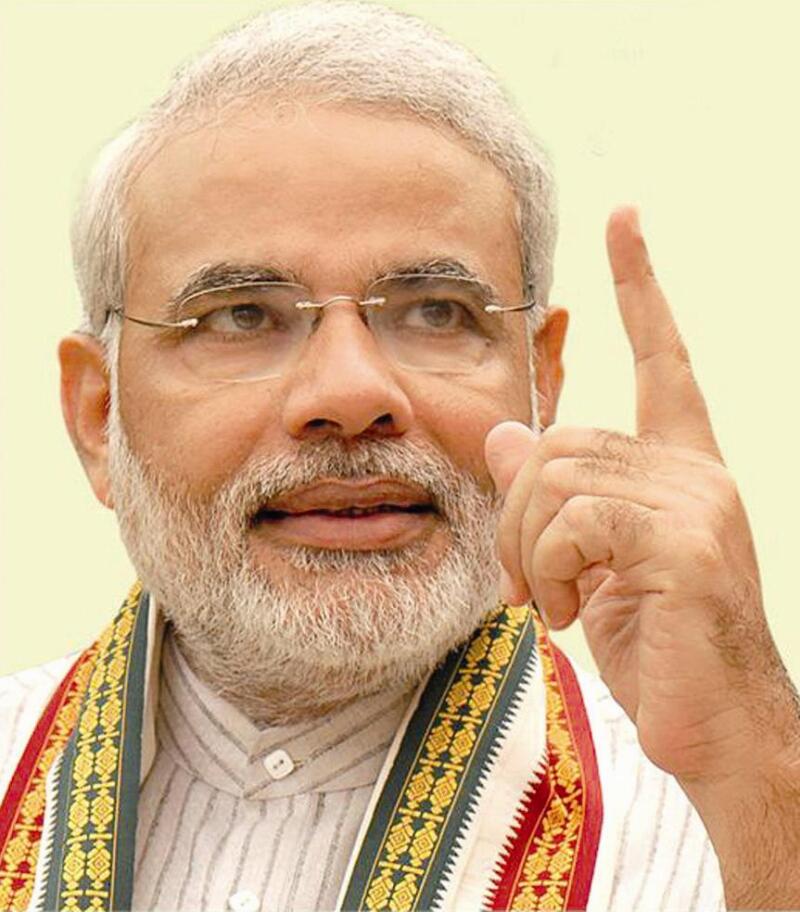
|
India PM Narendra Modi has promised to “embark on the path of IPRs and Patents in a big way" |
Narendra Modi, the newly-elected Indian Prime Minister, in his maiden speech from the historical Red Fort at New Delhi on India’s Independence Day on August 15, 2014 urged and welcomed the world to come and ‘Make in India’. In another development, the PM is also said to have directed the Department Of Electronics and Information Technology to ensure that the net import-export balance for the sector be brought down to zero by the year 2020. In a concomitant development, the Telecom Minister was quoted stating that the government wants to ensure a smartphone in the hands of every citizen by 2019 thereby ensuring that India is a ‘connected economy’. The culmination of these developmental trends was taken a step further on the eve of the government’s 100th day in office with the announcement of allowing the much needed foreign direct investment in defence and railway infrastructure.
Clearly, these are the right noises which any investor interested in investing in India would want to hear. Additionally, with the world still recouping from the recession, it now clearly recognises the business opportunity which India has to offer.
This emphasis of investing in India is not a paradigm shift in the thought process of the current Indian Government. The Bhartiya Janta Party (BJP) which came to power with a thumping majority, in its election manifesto prior to the elections, had stated in its agenda to make India a global manufacturing hub with the government setting ‘World Class Investment and Industrial Regions’ for manufacturing. The manifesto also referred to creating an ‘ecosystem for multi-country and inter-disciplinary collaborative research’ and establishing an intellectual property rights regime thereby maximising the incentive for generating and protecting intellectual property for all inventors.
Pushing outward
Evidently, India is recognising the importance of indigenous manufacturing and skill development, so that some of the products which are being imported can now be ‘Made in India’ and eventually exported to rest of the world.
The gravity of the situation with regard to import of certain products, especially electronic products is definitely alarming. To elucidate, if India continues to import electronics the way it is, by 2020, its import bill for electronics into India shall surpass India’s oil import bill. Clearly, a shift from importing these products to exporting them would definitely be in the country’s interest and a big boost to the Indian economy. Some of the steps taken by the current government in this direction include establishing the first manufacturing cluster by March 2015. Several news reports have highlighted that this government’s vision is focused on making India self -sufficient in electronic manufacturing capacity.
Not a new concept

|
Anupam Pandey |
This sudden awareness and emphasis on manufacturing by the current Indian government is not new. The previous government led by Dr Manmohan Singh also promoted the concept of increasing innovation and boosting manufacturing in India.
As a matter of fact, recognising that innovation is the engine for the growth of prosperity and national competitiveness in the 21st century, the President of India had declared the 2010s as the ‘Decade of Innovation’. To take this agenda forward, the (former) Office of Adviser to the PM had worked on developing a national strategy on innovation with a focus on an Indian model of inclusive growth.
Subsequently, the National Innovation Council (NInC) was set up to discuss, analyse and help implement strategies for inclusive innovation in India and prepare a roadmap for innovation for the entire decade. Sector and state-specific innovation councils and industry innovation clusters were created to spread and promote innovation and to disseminate skills. The NInC in collaboration with the Ministry of Micro, Small and Medium Enterprises also set up a dedicated fund called the India Inclusive Innovation Fund for promoting grass root innovations with social returns as well as modest economic returns. A scheme for creation of the National Optical Fiber Network for providing broadband connectivity in rural parts of India was also approved.
The previous government in 2011 had approved a manufacturing policy with an aim to increase the sectoral share of manufacturing to at least 25% by 2022 and to create 100 million additional jobs by 2022. In the same year, an electronics policy was also initiated to boost electronic manufacturing in the country. To intrinsically protect the IP vested in schemes proposed under such policies, a draft National IP strategy was drafted and circulated amongst the stakeholders for comments.
Challenges faced
In spite of the number of measures adopted and initiatives taken by the previous government, the investment climate in the country has remained timid. Moreover, the manufacturing sector is yet to receive or reap into the benefits of these policies and initiatives. It is a matter of public knowledge that some of the sectors opened to FDI by the previous government did not receive the anticipated response and failed to generate the right business interest of investing in India.
One of the main reasons attributed to low FDI in IP-sensitive sectors is the perception that India needs to modify its IP regime and fast-track its legal system to attract foreign investments. For example, India has been severely criticised in the past for issuing a compulsory license.
Additionally, many of the foreign investors are of the view that investing in India requires a lot of patience and deep pockets to sustain cash flow uncertainties. Companies investing in India are believed to have found out that the actual market scenario in India is distinctly different from their original understanding as India throws unique challenges at them.
Red tape is one such challenge. The number of licenses and approvals required to run certain businesses in India, not to mention the complex local laws that come into play, as opposed to a single window clearance system in many countries, makes doing business in India difficult. The difficulties in procurement of land and archaic labour laws have also been considered as major impediments in doing business in India.
Because of these and other issues, India’s reputation among international investors has weakened. For example, the World Bank, in its annual ease of doing business rankings, ranked India as the 134th easiest market to do business in, worse than the previous year rank of 131, and putting it last among the so-called BRICS economies.
Looking ahead
It is for certain that the current government shall have to do something different from the previous in order to ensure that the global investors invest in India with renewed vigour and faith to achieve results in a viable turnaround time. The BJP in its election manifesto declared that it intends to create a ‘conducive, enabling environment’ formaking ‘doing business in India easy’. The key may lie in the implementation of the government initiatives and execution of the promises highlighted in the election manifesto.
A welcome step in this regard is the start of the exercise of reviewing all obsolete laws in the country. A skill development and entrepreneurship ministry is being established to disseminate skills thereby making Indian youth more employable. Emphasis is being laid on internet connectivity in rural India which may open more avenues in the e-commerce sector. The business news channels are again buzzing with reports that the business climate in the country is improving. Furthermore, it has recently been announced that a new IP policy shall be circulated which highlights the vision of the government and also brings clarity to the existing laws.
As the world watches India at this key juncture as one of the most important developing nations and as one of the biggest markets in Asia, only time will tell whether India reboots itself and meets the expectations of its own citizens to become a stronger economy or remains stuck in quagmire full of false promises and paper tigers.
Anupam Pandey is a partner at Obhan & Associates in New Delhi










